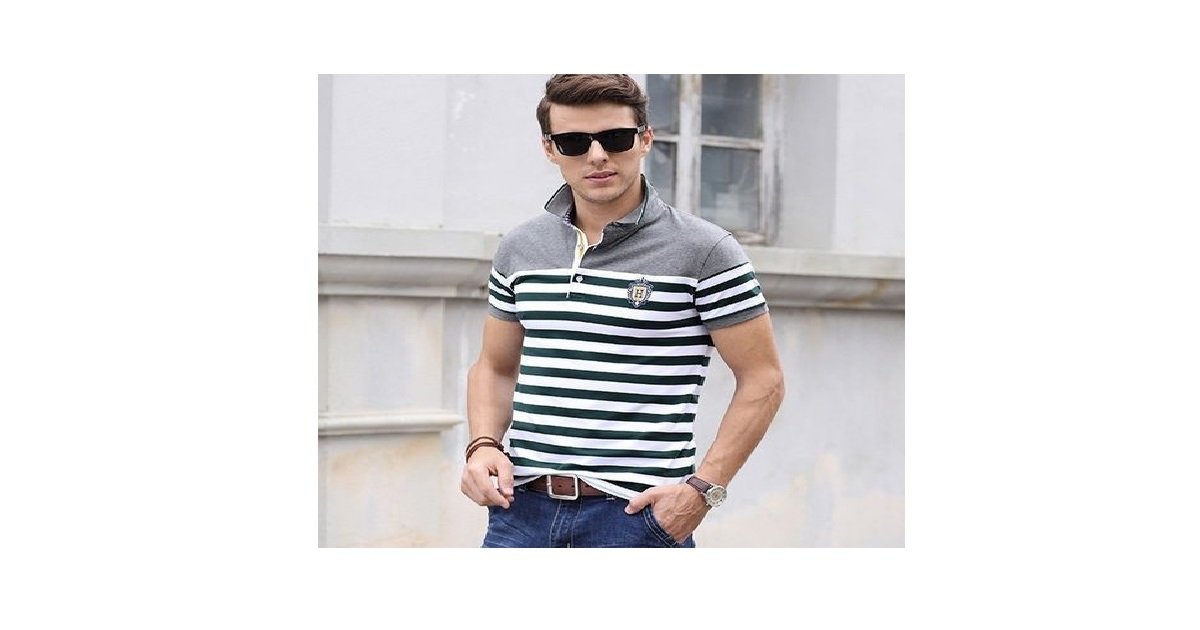The creation of premium men’s polo shirts goes beyond mere fabric and design. At the heart of their allure is a meticulous stitching process that guarantees not just style, but durability and comfort. A premium polo shirt isn’t just about its appearance. It’s about how every stitch plays a role in enhancing both the look and the longevity of the garment. Let’s dive into the intricate stitching process that separates ordinary polos from premium ones, highlighting the craftsmanship and expertise required at each stage.
Selection of Premium Fabric
The foundation of any Premium Men’s Polo Shirts lies in the fabric. Designers and manufacturers source high-quality materials such as 100% cotton, cotton blends, or mercerized cotton to ensure durability and comfort. The fabric’s texture directly impacts how well the stitching holds, which is why careful selection is vital. Fabric with the right blend ensures the polo maintains its structure even after multiple washes.
Importance of Pre-Shrinking
Before any stitching begins, premium fabrics undergo a pre-shrinking process. This essential step ensures that the shirt won’t warp or shrink after washing. Pre-shrinking allows the garment to retain its original size and shape, ensuring customer satisfaction in the long term. It’s a behind-the-scenes effort that significantly enhances the durability of the finished product.
Cutting and Pattern Design
The first real step of the stitching process begins with precise cutting of the fabric. Accuracy in this phase is paramount. Using specialized tools, designers cut the fabric into pre-defined patterns, ensuring consistency across multiple sizes. Mistakes in this phase can lead to uneven stitching and inconsistent fits.
Patterns are designed with care, considering the polo’s intended style and fit. Whether it’s a slim fit or a relaxed design, pattern precision plays a critical role in how the shirt looks once it’s stitched together. Laser cutting techniques are often used in premium polo production to ensure accuracy down to the last millimeter.
Stitching Methods Used for Premium Polo Shirts
Single Needle Stitching
One of the most renowned methods for creating clean and durable seams is the single needle stitch. This type of stitching ensures a polished, professional look with no rough edges. The single needle stitch is commonly used on the sides of premium polo shirts, along with areas that require reinforcement such as the shoulder seams and collars. This technique not only enhances durability but also provides a sleek, refined appearance.
Double Needle Stitching
For additional durability, double needle stitching is used in areas that endure the most wear and tear. The hemline, armholes, and placket often benefit from this method, as it strengthens the shirt and prevents the fabric from fraying over time. While this method takes longer to execute than single needle stitching, the result is a long-lasting, high-quality polo shirt.
Overlock Stitching
The overlock stitch is employed to finish the raw edges of fabric inside the shirt, especially in areas like the seams. This technique locks the edges together and prevents the fabric from unraveling. Premium polos often use a three-thread overlock to ensure sturdiness and neat finishing inside the shirt, adding to the overall durability and comfort.
Collar and Placket Construction
The collar and placket of a polo shirt are its defining features. They demand special attention during the stitching process. The collar is often crafted separately using ribbed knit fabric, which offers elasticity while maintaining its shape. Attaching the collar to the shirt body requires precision and expertise to ensure a seamless fit.
The placket—the front section of the shirt where the buttons are sewn—demands special care in stitching. The fabric must be neatly folded and stitched to form the buttonholes, which are reinforced using bartack stitching. Bartacking, a method of reinforcing high-stress points, ensures that the buttons remain secure even with frequent use.
Side Seams and Hemline Stitching
One key feature of a premium polo shirt is its well-stitched side seams. Flatlock stitching or serged seams are commonly used here to ensure that the shirt’s sides lay flat and don’t chafe against the skin. These stitches enhance comfort, particularly for wearers who engage in active movements.
The hemline, typically double-stitched, provides both aesthetic appeal and functional strength. This part of the shirt often faces the most movement, so ensuring it’s tightly stitched using twin-needle stitching prevents fraying and maintains the polo’s sharp look.
Button Attachment and Reinforcement
The buttons on a premium men’s polo shirt are not just functional but also an aesthetic detail. Manufacturers often use mother-of-pearl, horn, or custom-branded buttons for a luxurious touch. These buttons are sewn onto the placket using a cross-stitch method, ensuring they are securely fastened.
To prevent buttonholes from unraveling, bar tacks or zigzag stitches are used around the buttonholes. This reinforcement ensures that the buttonholes maintain their shape, even after repeated use.
Embroidery and Branding
Another distinguishing factor of premium polo shirts is their embroidered logos or brand insignias. The embroidery is typically done using high-density stitching, which ensures the logo remains crisp and defined over time. The quality of stitching directly impacts the appearance of the logo, which is why it is essential to employ skilled professionals for this task.
Embroidery threads are chosen to match or contrast with the polo’s fabric, depending on the brand’s design preferences. For premium brands, polyester or silk threads are preferred due to their sheen and durability.
Final Inspection and Quality Control
Once the stitching process is complete, every shirt undergoes a thorough inspection to ensure that it meets the brand’s quality standards. Inspectors check the seams, buttonholes, and overall stitching for any imperfections. If any flaws are found, the garment is either corrected or discarded to maintain the brand’s reputation for excellence.
Packaging and Presentation
Premium polo shirts are not just about construction; presentation is also key. Once the shirts pass inspection, they are carefully folded, often with tissue paper placed between the layers to prevent creasing. Many premium brands also use branded packaging, further enhancing the luxury experience.
Sustainability in Stitching
In recent years, premium brands have begun incorporating sustainable practices into their stitching processes. This includes using eco-friendly threads, reducing fabric waste through improved cutting techniques, and employing ethical labor practices. As sustainability becomes more important to consumers, brands that prioritize eco-friendly stitching processes are gaining an edge in the market.
Conclusion
Creating a premium men’s polo shirts requires attention to detail at every stage of the stitching process. From fabric selection to final packaging, each step contributes to the overall quality and durability of the garment. Whether it’s the precision in single and double needle stitching, the reinforced placket, or the perfectly aligned embroidery, premium polos exemplify craftsmanship at its finest.



